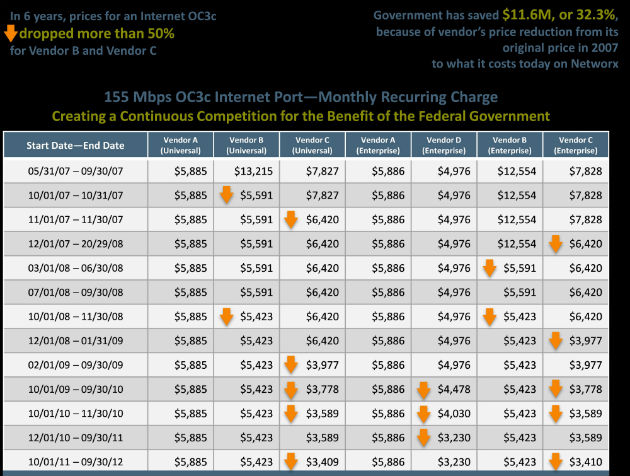Common-sense techniques to save taxpayer dollars

Basic business concepts such as price transparency can drive big savings. We need to apply them more broadly.

When you are about to buy something in your personal life -- groceries, appliances, books, airline tickets, etc. -- you can compare prices across multiple vendors before you ultimately hit the "buy" button. The vendors can see one another's prices as well and adjust them accordingly. As a result, we consumers benefit. This has always been the case; the Internet simply makes our reach broader and our methods more exacting.
Now what if there was a government buying program that provided complete price transparency for contracts? Would the same thing happen? Would the government get better prices? Would the vendors try to one-up one another?
The answer, of course, is yes -- and it is already happening. For the benefit of taxpayers and customer agencies, the General Services Administration has been running that type of marketplace since 1999, first for FTS 2001 and now for the Networx telecommunications program.
In today's world, where every blemish or perceived shortcoming is showcased while positive performance and outcomes go unmentioned, I believe that GSA's recognition of the advantages of price transparency is worthy of note, and the techniques and tools that were built into the Networx program deserve to be broadly known.
GSA provides price transparency for every telecommunications service available on the contract via Web-based tools called the Networx pricers. Once users have specified a service, the tool provides prices for all the vendors simultaneously. Now customers can compare Vendor A to Vendor B -- and to vendors C, D and E. And, just as with Amazon, agencies are shown other telecommunications services that they might want to buy, some of which are automatically packaged and sold with the original item.
Because GSA made that information public, the biggest users of the tools are the vendors themselves. Firms are constantly looking to see what competitors are doing and adjusting accordingly. If a vendor sees that its prices are too high, it submits a price reduction to GSA. After the reduction is accepted, GSA updates the site to reflect the new price, and agencies' bills are reduced accordingly.
Let's look at two examples in which agencies saved millions because of this marketplace.
The first example is for Internet service at 155 megabits/sec. In 2007, some vendors' prices were more than twice those of other providers, but they have steadily reduced their prices for the government to match their competitors. As a result, agencies have saved nearly $12 million -- or 32 percent -- since 2007 on just that one contract line item.

The second example is for Managed Trusted IP Services, a program designed by GSA and offered by the Networx vendors to meet the Office of Management and Budget's Trusted Internet Connections mandate. For services with a 45 megabits/sec connection, the government has benefited from a 64 percent average price reduction since 2009, resulting in a savings of $7.6 million.

Those kinds of savings smack of buying TVs at Walmart. Hats off to GSA for its foresight and innovation. It's a win-win-win situation: Agencies are savings millions, vendors have a transparent way to compete for business, and GSA fosters standards for achieving measurable value.
Given the sensibility and business value of this approach, one wonders why it is not used more often. We might not be able to compare prices and drive down the cost of an F-35, but applying basic business decision-making to government buying is a powerful idea that will be hard to ignore. And it can be applied to far more than just telecom services.
NEXT STORY: GSA seeks industry input on NS2020


